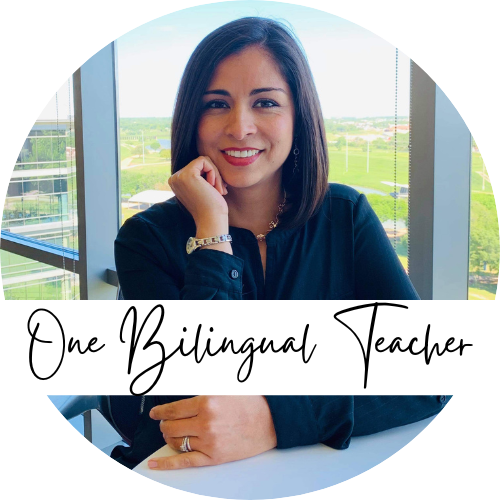Exploring Cultural Diversity Through a Holidays Around the World Project
As a teacher at a multicultural school with ESL students, I wanted to help our students learn about different cultures and understand the world and each other better. This is when the "Holidays Around the World" project was born. This project was designed for middle and high school students at various academic levels or English language proficiency. I wanted to help them explore different holidays from around the world and learn about the different traditions that make our world unique.
Project Overview
The "Holidays Around the World" project encourages students to learn about the origins, customs, and significance of a holiday of their choice. It lasted about three weeks and had three parts: research, writing, and presentation. By participating in this project, students learned about different cultures and improved their research, writing, and presentation skills.
Research Phase
Students started by choosing a holiday from a list, which included holidays from all over the world.
Christmas (various countries)
Hanukkah
Kwanzaa
Boxing Day
Bodhi Day
Dongzhi Festival
Yule
Omisoka
After picking a holiday, students entered the research phase. They investigated the holiday's name, where in the world it's celebrated, its history, and significant dates. Students also explored the foods, beliefs, traditions, and celebrations that go with the holiday. They also looked at cultural clothing worn during the holiday and discovered fun facts about its significance.
This part focused on important skills like finding good sources, checking them for accuracy, taking good notes, and citing sources correctly.
Writing Phase
After their research, students wrote an essay about their holiday. The essay had all the main points from their research and gave a complete picture of the holiday. Students wrote their essays, made changes, and published them for the right audience. This process helped students write informational texts better.
For students who needed extra support (my ELLs) I provided a sample essay and handouts with sentence starters to help them structure their essays. Peer review and teacher feedback helped improve the students' writing, making it clear, well-organized, and in more detail.
Slideshow Creation and Presentation
The final component of the project involved creating a slideshow to present their findings to the class. Students were to use language effectively to present their research while being informative and engaging. This phase allowed students to practice public speaking and presentation skills, fostering confidence and communication abilities.
In Your Classroom
If you’re ready to try this in your class, but don’t have the time to start from scratch, I’ve got you covered. Here is everything that’s included in the Holidays Around the World project:
A detailed teacher guide
A sample essay
Student handouts covering slideshow guidelines, writing assignments, sentence starters, peer evaluation checklists, and editable rubrics for both presentations and writing assignments
Sentence Starters: Assisted students in beginning their essays and presentations. (Great for ESL!)
Peer Evaluation Checklist: Encouraged constructive feedback among students.
Presentation Rubric (Editable): A tool for evaluating student presentations.
Writing Rubric (Editable): A tool for assessing student essays.
These resources ensured that both teachers and students were well-supported throughout the project.
Conclusion
The "Holidays Around the World" project was more than just a research assignment; it was an opportunity for students to connect with diverse cultures, appreciate global traditions, and develop reading, writing, and speaking. By learning about holidays from around the world, students learned more about different cultures. They also learned to appreciate and celebrate the differences that make our world a better place.
Standards Covered
The "Holidays Around the World" project aligns with several Common Core State Standards (CCSS) and Texas Essential Knowledge and Skills (TEKS) standards, particularly in the areas of research, writing, and presentation skills. Here’s a breakdown of the relevant standards covered in this project:
Common Core State Standards (CCSS)
Research Phase:
CCSS.ELA-LITERACY.W.6.7, W.7.7, W.8.7: Conduct short research projects to answer a question, drawing on several sources and refocusing the inquiry when appropriate.
CCSS.ELA-LITERACY.W.6.8, W.7.8, W.8.8: Gather relevant information from multiple print and digital sources, assess the credibility of each source, and quote or paraphrase the data and conclusions of others while avoiding plagiarism and following a standard format for citation.
Writing Phase:
CCSS.ELA-LITERACY.W.6.2, W.7.2, W.8.2: Write informative/explanatory texts to examine a topic and convey ideas, concepts, and information through the selection, organization, and analysis of relevant content.
CCSS.ELA-LITERACY.W.6.4, W.7.4, W.8.4: Produce clear and coherent writing in which the development, organization, and style are appropriate to task, purpose, and audience.
CCSS.ELA-LITERACY.W.6.5, W.7.5, W.8.5: With some guidance and support from peers and adults, develop and strengthen writing as needed by planning, revising, editing, rewriting, or trying a new approach.
Slideshow Creation and Presentation:
CCSS.ELA-LITERACY.SL.6.4, SL.7.4, SL.8.4: Present claims and findings, emphasizing salient points in a focused, coherent manner with pertinent descriptions, facts, details, and examples; use appropriate eye contact, adequate volume, and clear pronunciation.
CCSS.ELA-LITERACY.SL.6.5, SL.7.5, SL.8.5: Include multimedia components and visual displays in presentations to clarify information, strengthen claims and evidence, and add interest.
Texas Essential Knowledge and Skills (TEKS)
Research Phase:
§110.22(b)(11), §110.23(b)(11), §110.24(b)(11) (Grades 6-8): Students are expected to use a systematic process to organize and present their research, including gathering relevant sources, evaluating their credibility, and citing them appropriately.
§110.22(b)(24), §110.23(b)(24), §110.24(b)(24): Use appropriate research strategies to locate and use information from a variety of sources.
Writing Phase:
§110.22(b)(10), §110.23(b)(10), §110.24(b)(10): Write expository texts to communicate ideas and information to specific audiences for specific purposes, including using clear and concise language to convey information.
§110.22(b)(11), §110.23(b)(11), §110.24(b)(11): Students use elements of the writing process (planning, drafting, revising, editing, and publishing) to compose text.
Slideshow Creation and Presentation:
§110.22(b)(24), §110.23(b)(24), §110.24(b)(24): Students create visual displays or graphics, including charts, diagrams, and illustrations, to support their presentation of information.
§110.22(b)(27), §110.23(b)(27), §110.24(b)(27): Give a well-organized presentation, speaking clearly and logically, and employing eye contact and appropriate volume to engage the audience.





